Original color lithograph 'Scene Militaire' by Roger de la Fresnaye. Lithograph printed from an original painting made by the author in France, circa 1917. Published in France by Fernand Mourlot, circa 1968. Framed and signed in the stone. In good original condition, with minor wear consistent with age and use, preserving a beautiful patina. About the Artist: Roger de La Fresnaye (11 July 1885 – 27 November 1925) was a French Cubist painter. La Fresnaye was born in Le Mans where his father, an officer in the French army, was temporarily stationed. The La Fresnayes were an aristocratic family whose ancestral home, the Château de La Fresnaye, is in Falaise. His education was classically based, and was followed from 1903 to 1904 by studies at the Académie Julian in Paris, and from 1904 to 1908 at the École des Beaux-Arts.[1] From 1908 he studied at the Académie Ranson under Maurice Denis and Paul Sérusier, whose joint influence is evident in early works such as Woman with Chrysanthemums, 1909. This demonstrates the dreamlike symbolist ambience and stylistic character of work by the Les Nabis group. Fernand Mourlot: Fernand Mourlot was born on 5 April 1895 in Paris, France. He was the sixth of nine children of Jules Mourlot and Clemence Gadras. In 1911, at the age of 16, he was admitted as a student to the École nationale supérieure des arts décoratifs where he studied drawing. After his studies he joined his father and older brothers in the family business, the "Imprimerie J. Mourlot". In 1914, Jules Mourlot, through the sale of Russian bonds, would begin expanding the studios, eventually opening a second location on rue St. Maur and purchasing Imprimerie Bataille on rue de Chabrol. That year, the three eldest Mourlot brothers were also drafted into the French Army and sent to the front. Paul, the oldest brother, would be killed shortly after the start of the war. Georges and Fernand would remain in the army through 1918 and would both participate in many battles including the Battle of Verdun. While at the front, they would learn in 1917 of the death of their mother Clemence. Upon their return, they rejoined their father in the business. Georges, the eldest, would head the operations of the studios, while Fernand would concentrate on the artistic side and business development. At the death of their father in 1921, the name of the studios was changed to "Mourlot Freres" (Mourlot Brothers), with Georges and Fernand heading the company, while the other siblings became minority holders in the business. n 1923, Mourlot won a contract to produce an original lithographic poster to promote an exhibition of French Modern Art in Copenhagen, Denmark. A few years later, through the friendship he had developed with the writer Georges Duhamel, himself a former veteran of World War I, Fernand Mourlot met the painter Maurice de Vlaminck. In 1926 the three men worked closely on the production of what became the first of many illustrated books printed by Mourlot Studios. 1930 marked the start of another important and long lasting cooperation: the one between Mourlot and the director of the French National Museums. That year, the Studios printed a poster for the hundred year anniversary of Romanticism and another poster to promote the retrospective of Delacroix's work at the Musée du Louvre. These were followed in 1932 by a poster for an exhibition of Édouard Manet's work at the Musée de l'Orangerie, and in 1934, a poster of Honoré Daumier's work at the Bibliothèque Nationale. By 1937, Mourlot Studios had become the largest printer of artistic posters and was often hired by French and foreign museums, such as the Tate Gallery, to produce high quality posters for their upcoming exhibitions. That year, two more historically important posters for Pierre Bonnard and Henri Matisse would be created for the exhibition of the Art Independent at the Petit Palais. They would lead to a crucial meeting between Mourlot and Matisse and would usher the next chapter in the history of the Mourlot Studios.
Originale Farblithographie "Scene Militaire" von Roger de la Fresnaye. Lithographie nach einem Originalgemälde des Autors in Frankreich, ca. 1917. Veröffentlicht in Frankreich von Fernand Mourlot, ca. 1968. Gerahmt und im Stein signiert. In gutem Originalzustand, mit leichten alters- und gebrauchsbedingten Gebrauchsspuren, die eine schöne Patina erhalten haben. Über den Künstler: Roger de La Fresnaye (11. Juli 1885 - 27. November 1925) war ein französischer kubistischer Maler. La Fresnaye wurde in Le Mans geboren, wo sein Vater, ein Offizier der französischen Armee, vorübergehend stationiert war. Die La Fresnayes waren eine aristokratische Familie, deren Stammsitz, das Château de La Fresnaye, sich in Falaise befindet. Er erhielt eine klassische Ausbildung und studierte von 1903 bis 1904 an der Académie Julian in Paris und von 1904 bis 1908 an der École des Beaux-Arts.[1] Ab 1908 studierte er an der Académie Ranson bei Maurice Denis und Paul Sérusier, deren gemeinsamer Einfluss in frühen Werken wie Frau mit Chrysanthemen, 1909, deutlich wird. Es verdeutlicht das traumhafte symbolistische Ambiente und den stilistischen Charakter der Werke der Gruppe Les Nabis. Fernand Mourlot: Fernand Mourlot wurde am 5. April 1895 in Paris, Frankreich, geboren. Er ist das sechste von neun Kindern von Jules Mourlot und Clemence Gadras. Im Jahr 1911, im Alter von 16 Jahren, wurde er an der École nationale supérieure des arts décoratifs aufgenommen, wo er Zeichnen studierte. Nach seinem Studium arbeitet er mit seinem Vater und seinen älteren Brüdern im Familienbetrieb, der "Imprimerie J. Mourlot". Im Jahr 1914 begann Jules Mourlot durch den Verkauf russischer Anleihen mit der Erweiterung der Ateliers und eröffnete schließlich einen zweiten Standort in der Rue St. Maur und kaufte die Imprimerie Bataille in der Rue de Chabrol. In diesem Jahr wurden auch die drei ältesten Mourlot-Brüder zur französischen Armee eingezogen und an die Front geschickt. Paul, der älteste Bruder, fiel kurz nach Beginn des Krieges. Georges und Fernand blieben bis 1918 in der Armee und nahmen an vielen Schlachten teil, unter anderem an der Schlacht von Verdun. Während sie an der Front waren, erfuhren sie 1917 vom Tod ihrer Mutter Clemence. Nach ihrer Rückkehr arbeiteten sie wieder im Geschäft ihres Vaters mit. Georges, der Älteste, leitet den Betrieb der Studios, während Fernand sich auf die künstlerische Seite und die Geschäftsentwicklung konzentriert. Nach dem Tod des Vaters im Jahr 1921 wurde der Name des Ateliers in "Mourlot Freres" (Gebrüder Mourlot) geändert, wobei Georges und Fernand das Unternehmen leiteten, während die anderen Geschwister Minderheitsaktionäre wurden. 1923 erhielt Mourlot den Auftrag zur Herstellung eines originalen lithografischen Plakats für eine Ausstellung moderner französischer Kunst in Kopenhagen, Dänemark. Einige Jahre später lernte Fernand Mourlot durch seine Freundschaft mit dem Schriftsteller Georges Duhamel, selbst ein ehemaliger Veteran des Ersten Weltkriegs, den Maler Maurice de Vlaminck kennen. Im Jahr 1926 arbeiten die drei eng zusammen, um den ersten von zahlreichen Bildbänden zu produzieren, die von den Mourlot Studios gedruckt werden. 1930 begann eine weitere wichtige und dauerhafte Zusammenarbeit: die zwischen Mourlot und dem Direktor der französischen Nationalmuseen. In diesem Jahr druckten die Studios ein Plakat zum hundertjährigen Bestehen der Romantik und ein weiteres Plakat zur Förderung der Retrospektive des Werks von Delacroix im Musée du Louvre. Es folgten 1932 ein Plakat für eine Ausstellung von Édouard Manet im Musée de l'Orangerie und 1934 ein Plakat für das Werk von Honoré Daumier in der Bibliothèque Nationale. Bis 1937 waren die Mourlot Studios zum größten Drucker von Kunstplakaten geworden und wurden häufig von französischen und ausländischen Museen wie der Tate Gallery beauftragt, hochwertige Plakate für ihre bevorstehenden Ausstellungen zu produzieren. In diesem Jahr werden zwei weitere historisch wichtige Plakate für Pierre Bonnard und Henri Matisse für die Ausstellung des Art Independent im Petit Palais erstellt. Sie führten zu einem entscheidenden Treffen zwischen Mourlot und Matisse und leiteten das nächste Kapitel in der Geschichte der Mourlot Studios ein.





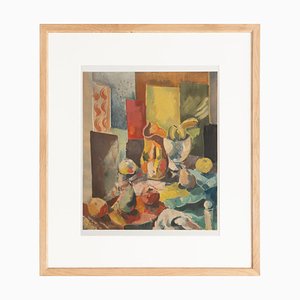
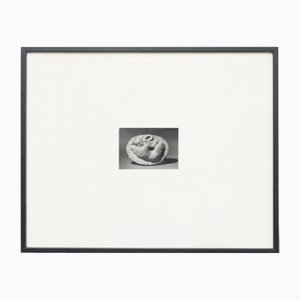



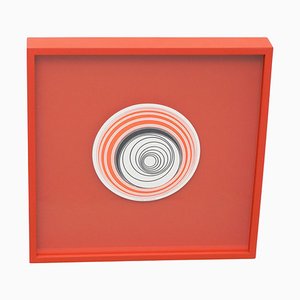
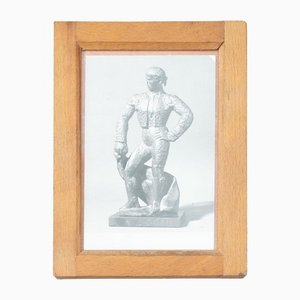

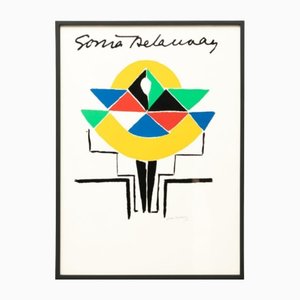
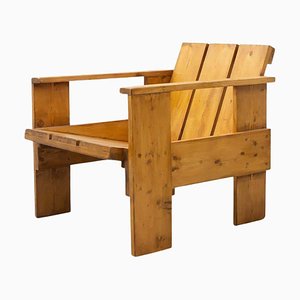

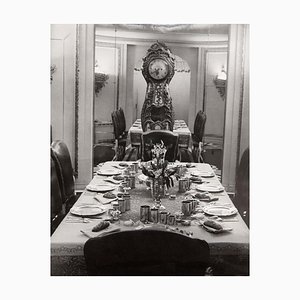


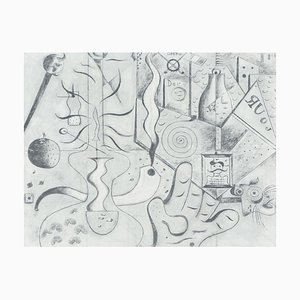
Schreiben Sie uns
Ein Angebot machen
Uns ist aufgefallen, dass Sie neu bei Pamono sind!
Bitte akzeptieren Sie die Allgemeinen Geschäftsbedingungen und die Datenschutzerklärung
Schreiben Sie uns
Ein Angebot machen
Fast geschafft!
Um die Kommunikation einsehen und verfolgen zu können, schließen Sie bitte Ihre Registrierung ab. Um mit Ihrem Angebot auf der Plattform fortzufahren, schließen Sie bitte die Registrierung ab.Erfolgreich
Vielen Dank für Ihre Anfrage! Unser Team meldet sich in Kürze bei Ihnen zurück.
Wenn Sie Architekt*in oder Inneneinrichter*in sind, bewerben Sie sich hier um dem Trage Program beizutreten.